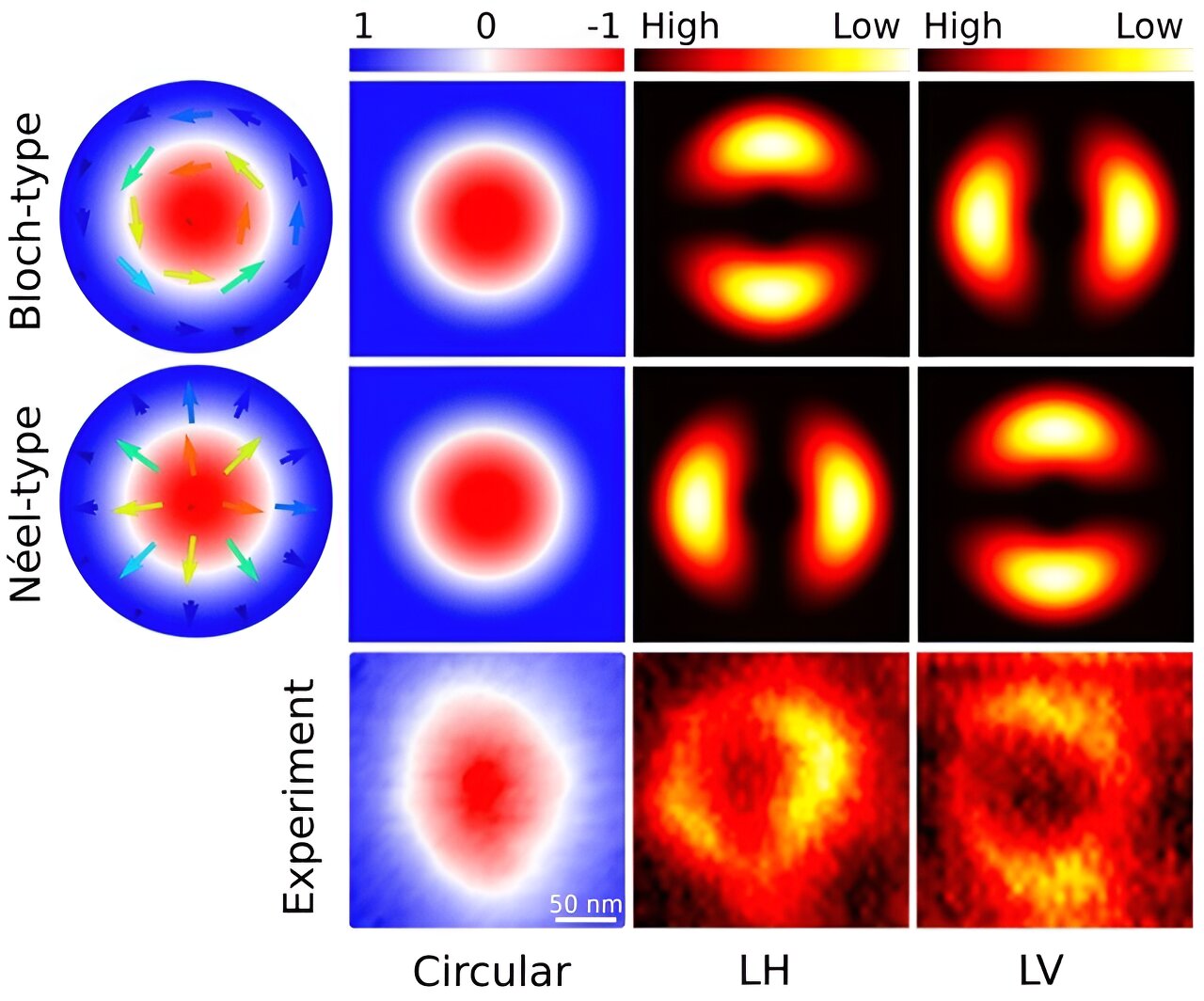A new study at BESSY II analyzes the formation of skyrmions in ferrimagnetic thin films of dysprosium and cobalt in real time and with high spatial resolution. This is an important step towards characterizing suitable materials with skyrmions more precisely in the future. The research is published in the journal Communications Physics.
Magnetic skyrmions are tiny vortices-like of magnetic spin textures that—in principle—can be used for spintronic devices, for example very fast and energy-efficient data storage devices. But at the moment it is still difficult to control and manipulate skyrmions at room temperature.
Isolated magnetic skyrmions are topologically protected spin textures that are in the focus of research interest today because of their potential applications in information technology. Skyrmions of particular interest occur in ferrimagnetic rare earth-transition metal (RE-TM) materials. They exhibit tunable ferromagnetic properties with antiferromagnetically coupled sublattices.
By choosing elements from the rare earth and transition metal group, they provide a playground for controlling magnetization and perpendicular magnetic anisotropy, which are key parameters for stabilizing topological ferrimagnetic textures.
One class of ferrimagnetic alloys has a stronger perpendicular magnetic anisotropy, including a compound of dysprosium (Dy) and cobalt (Co). These materials could store information in a much more stable way, but their magnetic properties and structures have hardly been studied so far. A team led by HZB physicist Dr. Florin Radu has now analyzed DyCo3 samples using X-ray microscopy methods at BESSY II and determined the spin structures.
They used scanning transmission X-ray microscopy with both X-ray magnetic circular dichroism and X-ray magnetic linear dichroism as element specific contrast mechanisms. The key feature exploited here is that the linear dichroism of RE materials is much stronger than that of the TM materials. “This allowed us to directly observe isolated ferrimagnetic skyrmions in high density and to accurately determine their domain wall type,” Radu reports.
The results show that the ferrimagnetic skyrmions are of the Néel type and can be clearly distinguished from the other domain walls, the Bloch walls. Thus, for the first time, the type of domain walls can now be reliably determined by X-ray investigations. This is an important step towards the application of this interesting class of materials for real spintronic devices.
More information:
Chen Luo et al, Direct observation of Néel-type skyrmions and domain walls in a ferrimagnetic DyCo3 thin film, Communications Physics (2023). DOI: 10.1038/s42005-023-01341-7
Citation:
Spintronics: X-ray microscopy unravels the nature of domain walls (2023, August 28)
retrieved 28 August 2023
from https://phys.org/news/2023-08-spintronics-x-ray-microscopy-unravels-nature.html
This document is subject to copyright. Apart from any fair dealing for the purpose of private study or research, no
part may be reproduced without the written permission. The content is provided for information purposes only.
Denial of responsibility! TechCodex is an automatic aggregator of the all world’s media. In each content, the hyperlink to the primary source is specified. All trademarks belong to their rightful owners, and all materials to their authors. For any complaint, please reach us at – [email protected]. We will take necessary action within 24 hours.

Jessica Irvine is a tech enthusiast specializing in gadgets. From smart home devices to cutting-edge electronics, Jessica explores the world of consumer tech, offering readers comprehensive reviews, hands-on experiences, and expert insights into the coolest and most innovative gadgets on the market.


